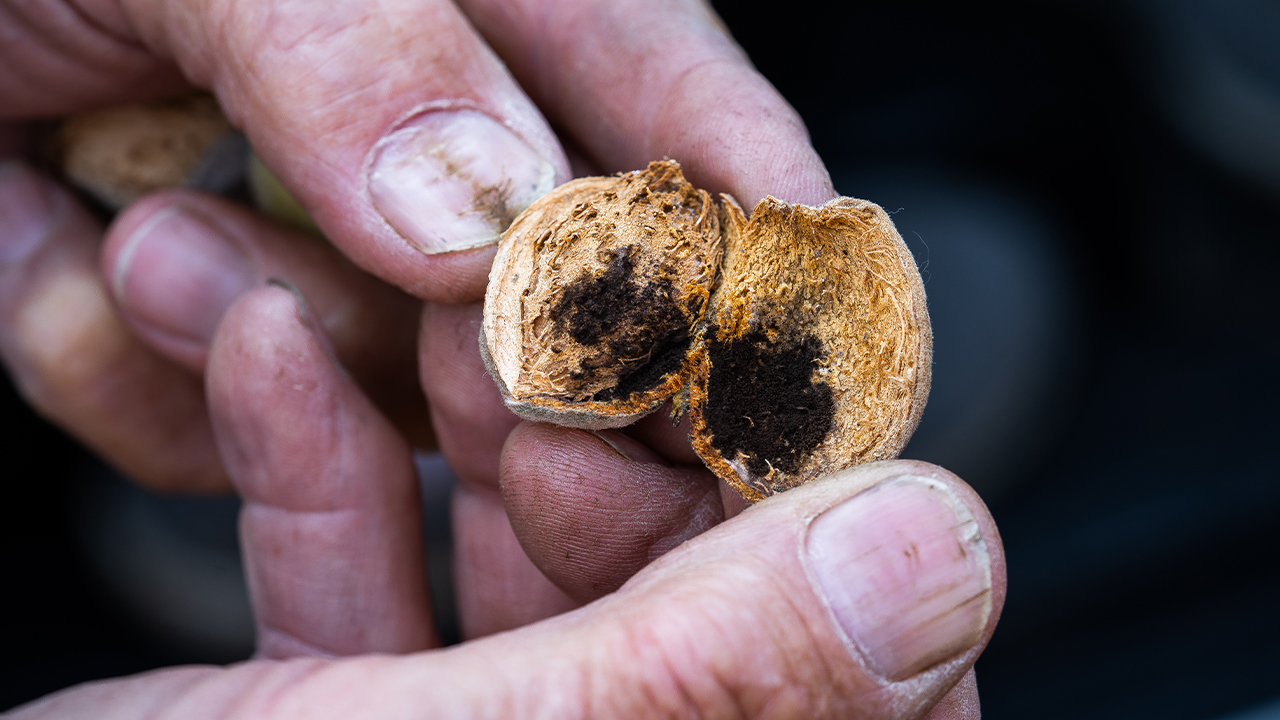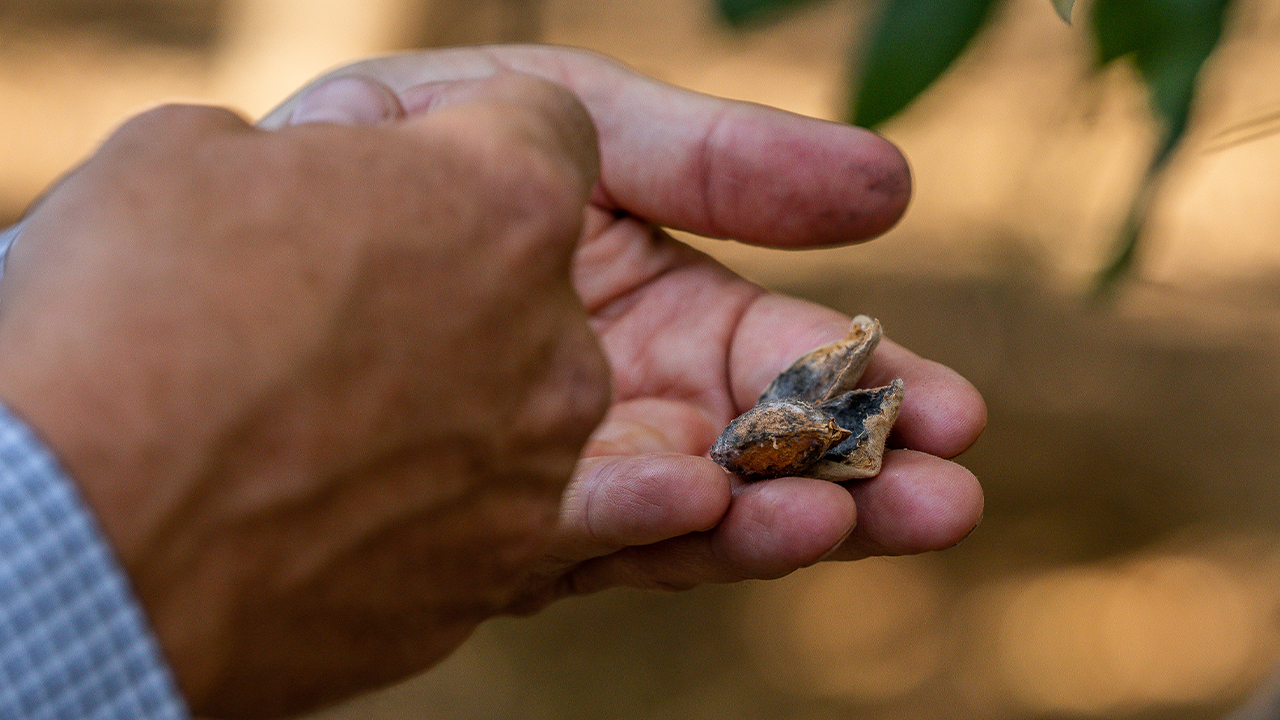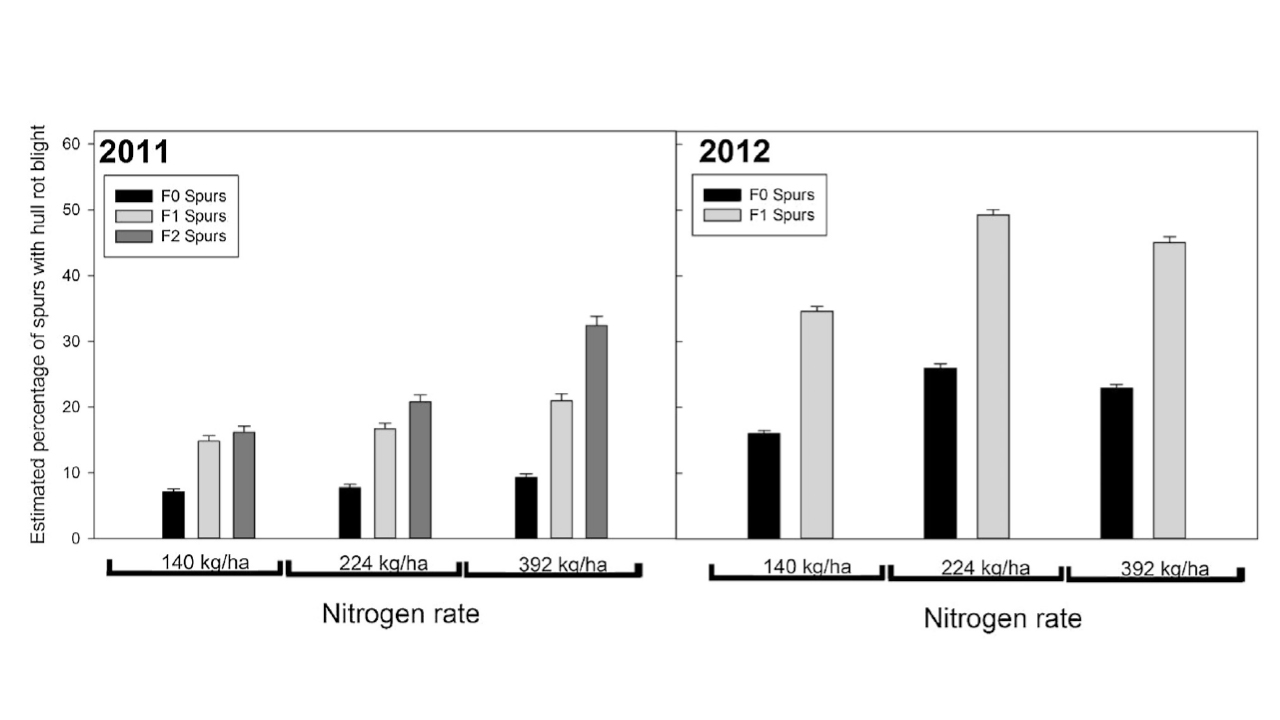A good starting point for proper management to combat hull rot is the use of the 4R’s of nutrient stewardship – right source, right rate, right time, and right place.
As a guideline for growers, UCCE suggests that trees demand 68 pounds of nitrogen for every thousand kernel pounds of almonds produced per acre. Continuous fertigation at the right rate is also a strategy encouraged by industry experts.
The Nitrogen Best Management Practices guide – developed by the Almond Board of California and U.C. Davis – notes that excessive tree nitrogen levels can lead to extended hull greening, prolonged vulnerability to hull rot infections and reduced shaking efficiency. The guide states that applying more nitrogen than is required in May and June, then withholding nitrogen fertilizer until after harvest, is not recommended. By doing so, a grower exposes the early excess nitrogen application to leaching loss in subsequent irrigations and may “over-feed” trees in the period immediately preceding hull split.
Additionally, stopping nitrogen fertilizer application in May or June can deprive trees of nitrogen during critical bud formation and the period when trees accumulate nitrogen for the harvest preparation stage, which occurs from hull split to early post-harvest. To minimize the risk of these problems and hull rot attacks, growers should continuously fertilize trees at the appropriate rate and time, using numerous small applications.
Reducing Water, Reduces Hull Rot
To many growers’ surprise, reducing water when approaching hull split is one of the prime ways to avoid hull rot. This technique is called regulated deficit irrigation (RDI).
“It’s not that you need to irrigate less through the whole season; it’s that you need to irrigate less at the first two weeks of hull split, so usually the first two weeks of July,” Holtz said.
A lot of growers are hesitant to reduce irrigation during the first two weeks of July because they can be the hottest weeks of the year, and growers are fearful that it will lead to mites. While pests are no issue to ignore, Holtz emphasized that hull rot is worse than any pest because it causes permanent damage to the lower canopy wood forever.
Further research by industry experts supports that inflicting mild stress on trees during early hull split results in significant reduction in hull rot. This research was conducted by Drs. Beth Teviotdale, David Goldhamer, and Mario Viveros, who experimented with deficit irrigation from March through November 1994 and 1995.
The researchers irrigated trees at 70, 85, and 100% of potential evapotranspiration (ETc) using two irrigation methods: sustained and regulated. The sustained irrigation method reduced water the whole season, while the regulated irrigation method began the year at normal irrigation rates and slowly reduced water leading up to hull split.
Irrigation frequency was the same for all treatments, and irrigation duration was always 24 hours. Deficit irrigations were applied by adjusting the sizes of the microsprinkler nozzle and operating pressures.
Their findings showed that the regulated irrigation method was more effective at reducing hull rot than sustained irrigation. In fact, eliminating irrigation during the two weeks preceding harvest reduced hull rot by 400-500% in those two consecutive years (Goldhamer and Viveros).
So, what can growers take away from this study? RDI is a proven technique to ensure hull rot is avoidable, and the UCCE recommends growers consult with their farm advisor to properly apply RDI and mild stress on their orchards during the first two weeks of hull split.
Using a pressure chamber when practicing RDI to check the tree’s stress levels is also an important tool to ensure proper use of this strategy. It’s important to note that a tree’s stress levels will differ according to its unique soil profile and environmental factors.
While managing hull rot is no small feat, extensive research shows that the time and attention dedicated to accurate nitrogen and irrigation levels are well worth the hassle to prevent this harmful disease from entering your orchard and ultimately affecting future yield. We recommend consulting with your farm advisor for further information and support to control hull rot.



